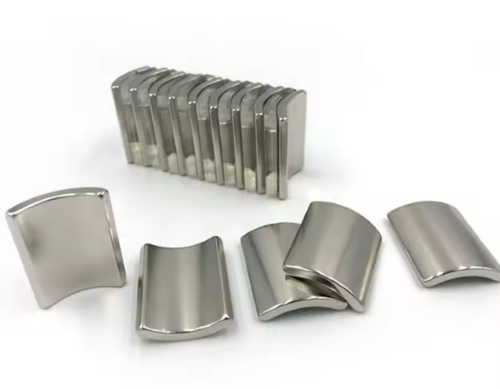5 Common Uses of Rare Earth Magnets
Introduction to Rare Earth Magnets
Rare earth magnets, including neodymium-iron-boron (NdFeB) and samarium-cobalt (SmCo) magnets, are the most powerful permanent magnets available. Their high magnetic strength and resistance to demagnetization make them indispensable in many advanced technologies and everyday products. Since their development in the 1980s, they have been integral to the advancement of modern technology.

Composed primarily of alloys of rare earth elements such as neodymium, samarium, and dysprosium, these magnets exhibit significantly stronger magnetic fields than traditional magnets. This article explores the common uses of rare earth magnets, highlighting their critical roles in various applications, supported by specific data and cases.
Related reading: Everything You Need to Know About Rare Earth Magnets
1. Electronics and Technology
One of the most prevalent uses of rare earth magnets is in the electronics industry. These magnets are essential components in:
- Hard Disk Drives (HDDs): Neodymium magnets are used in the read/write heads of HDDs, enabling precise data storage and retrieval. Their strong magnetic fields allow for high data density and compact design. For instance, Seagate’s 16TB HDDs utilize neodymium magnets to achieve such high storage capacity and reliability.
- Smartphones and Tablets: The compact size and powerful magnetic properties of rare earth magnets make them ideal for use in speakers, microphones, and vibration units in smartphones and tablets. For example, the iPhone’s Taptic Engine, which provides haptic feedback, relies on neodymium magnets for its operation.
- Headphones and Earbuds: Rare earth magnets are used in the drivers of high-fidelity headphones and earbuds, providing superior sound quality through enhanced magnetic response and efficient sound reproduction. The popular Bose QuietComfort headphones use neodymium magnets to deliver their renowned audio performance.
2. Renewable Energy
The renewable energy sector relies heavily on rare earth magnets to improve efficiency and performance in energy generation and storage:
- Wind Turbines: Neodymium magnets are crucial in the construction of permanent magnet generators in wind turbines. Their high magnetic strength and durability improve the efficiency of converting wind energy into electrical power. The Siemens Gamesa SG 10.0-193 DD offshore wind turbine, for example, uses neodymium magnets to achieve a capacity of 10 MW, significantly enhancing energy output.
- Electric Vehicles (EVs): Rare earth magnets are used in the motors of electric vehicles, where their high torque and efficiency contribute to better performance and extended range. The Tesla Model 3 employs neodymium magnets in its rear-wheel drive unit, which helps the car achieve an impressive range of over 350 miles on a single charge.
3. Medical Applications
In the medical field, rare earth magnets have become essential for both diagnostic and therapeutic applications:
- Magnetic Resonance Imaging (MRI): Samarium-cobalt magnets are often used in MRI machines due to their stability and strong magnetic fields. These magnets are critical for creating the detailed images required for accurate medical diagnoses. For instance, Siemens Healthineers’ MAGNETOM Altea MRI system utilizes rare earth magnets to deliver high-resolution imaging.
- Magnetic Therapy Devices: Neodymium magnets are used in various therapeutic devices aimed at pain relief and muscle relaxation. Their strong magnetic fields are believed to improve blood circulation and promote healing. The BioFlex Magnetic Therapy System is an example that uses neodymium magnets to help treat various musculoskeletal conditions.
4. Industrial Uses
The strength and reliability of rare earth magnets make them ideal for various industrial applications:
- Magnetic Separators: Neodymium magnets are employed in magnetic separators used in the mining and recycling industries. These devices help in the efficient separation of ferrous materials from non-ferrous materials, improving the purity of recycled products and the efficiency of mining operations. Goudsmit Magnetic Systems’ neodymium-based separators are widely used in these industries.
- Magnetic Bearings and Couplings: In industrial machinery, magnetic bearings and couplings utilizing rare earth magnets provide frictionless and wear-free operation, leading to increased efficiency and reduced maintenance costs. Calnetix Technologies’ magnetic bearings, which use neodymium magnets, are used in various high-speed industrial applications.
5. Consumer Products
Many everyday consumer products benefit from the use of rare earth magnets:
- Household Appliances: Rare earth magnets are used in various household appliances, including vacuum cleaners, washing machines, and kitchen appliances, where they enhance motor performance and energy efficiency. Dyson’s digital motors, which use neodymium magnets, are a prime example of this application.
- Toys and Educational Kits: The strong magnetic properties of rare earth magnets make them ideal for use in educational toys and kits, allowing for the demonstration of magnetic principles and the construction of magnetic models. Popular products like Geomag construction sets use neodymium magnets to enable intricate and stable structures.
Conclusion
From enhancing the performance of electronic devices and renewable energy systems to revolutionizing medical diagnostics and industrial processes, rare earth magnets play a vital role in our daily lives. As technology continues to advance, the demand for rare earth magnets is expected to grow, further cementing their importance in the future of innovation and development. For more information, please check Stanford Magnets.